A good restoration is always a labor of love. If it wasn’t, few people would spend the money -- but more than money, it’s the time and painstaking work that makes the difference between a car that’s been freshened up for a quick and profitable sale and a unique piece of history that runs and drives as if it were new. To undertake an effort of this magnitude, the car has to mean something important to the owner.
Click photo for slideshow...
“My family didn’t have a lot of money when I was growing up. When I was a kid, I used to watch old 30s and 40s escapist movies that showed life among the rich. Those people were having a lot of fun, and they would have these stately-looking cars. So in high school, as opposed to having a fast car, I wanted to drive the big classics. A luxury car was something that appealed to me, partly because my family couldn’t afford one,” says Jeremy Wilson of Portland.
One of Wilson’s first cars was a big, beautiful 1946 Packard seven passenger sedan that he bought for $150. “Packards have their own feeling. They’re very smooth driving. Almost unbelievably smooth for cars of that era. It was fun to be able to fit seven friends in the car, and I used to give people a ride home from school in exchange for gas money. After the Packard, among other cars, I had a ‘41 Buick seven passenger, a ‘49 Cadillac seven passenger, and a ‘58 Cadillac seven passenger.”
“As a mechanic, I drove a lot of cars and came to appreciate not the fast cars but rather those that were well-built. Cadillac was my favorite at the time but I liked Packards too--both were top of the line automobiles with ultra-smooth, quiet rides and plenty of power,” he says.
Wilson’s passion for the big iron led him to purchase, fix, and sell nearly a hundred cars between age 16 and 21. Life and career eventually took him away from repairing cars, but as with so many restoration stories, fond memories remained and eventually pulled him back to his automotive love affair. Using his experience creating informational websites (JazzStandards.com,JazzBiographies.com) he decided to create PopularRestorations.com. Soon after he chose the 1946 Packard as the website’s first project car.
“Here’s what’s funny: the name of the car. It’s a 1946 Packard Custom Super Clipper Eight Extended Wheelbase Line Four Door Sedan Seven Passenger. I think that’s funny just in itself,” he says, and adds: “One thing I’d like to point out is that in the Extended Wheelbase Line, there’s the “Seven Passenger” version, and the “Limousine.”
The limousine has a separation window and leather on the front seat as it is designed to be chauffer driven. I looked in the Classic Car Club of America registry, and their directory shows that there are only one or two seven passenger sedans from 1946 and only a dozen or so 1947 seven passenger sedans, so there really aren’t many left,” Wilson says.
Locating the Car
Over 40 years after that first Packard, Wilson set out to locate a 1946 Packard Clipper Seven Passenger. To find a solid example, Wilson began a nationwide search. “I was watching eBay and Hemmings, that sort of thing. This car was in Sacramento. I flew down to look at it and drove it home. It was either bold or foolish, depending on how you want to look at it,” he says.
The drive home to Portland began the bonding process, and the shopping list for the restoration.
“I got the oil changed, and Jiffy Lube made me sign a release to even change the oil as they had no specs for it. I got on the freeway and the whole car was rumbling from the old bias-ply tires it had been sitting on. The overdrive wasn’t working and I was afraid to push it much over 55 MPH,” he says.
It took Wilson two days to get back from Sacramento, nursing the old sedan along the highway.
“The right front wheel brake started grabbing on the trip, and finally it started locking up with even the slightest pressure on the brake pedal. Also, the exhaust manifold gasket blew out at some point, and the effect was like sawing the header pipe off. It was really loud. And the engine started smoking - huge billowing clouds of smoke coming out. I suspect some sludge was blocking oil return holes. I was thinking I would have to store the car in southern Oregon and then come get it, but then the smoke cut back so I made it,” Wilson remembers.
You might think a long trip spent praying for the next mile would be a traumatic way to begin an automotive relationship, but there was more to it than creaks and oil smoke.
“The other salient thing I noticed on that trip was that everywhere I stopped, people would come over and ask me questions about the Packard, or tell me about their collector car. People would come up to me in coffee shops and ask me about it. People on the freeway would give me thumbs-up for it,” Wilson recalls.
Deciding on the Restoration
Like many first-time restorers, Wilson wondered where to begin, and what the goal of his project should be. Expert advice helped him find the way.
“The first challenge was to decide how to restore it. Really, what I wanted was to be able to drive the car anywhere, safely and comfortably. As much as it might upset classic connoisseurs, I did consider replacing the suspension and drive train with something modern. I was thinking that if I wanted to just hop in and drive, I should have a modern front suspension and a small block Chevy engine with an automatic transmission. I thought the Packard running gear and suspension wouldn’t cut it,” Wilson recalls.
“As time went on, it was a very hard decision to make. At a certain point, I had to decide which way I was going to go. I talked to Don Hawkins at Advanced Auto Restoration and Bob Earls, both on the east side of Portland. Although he didn’t push me one way or the other, Bob told me that this model and year is considered a ‘full classic’ by the Classic Car Club of America. It’s a distinction for a car. Eventually enough people persuaded me that it would be best to keep it stock,” Wilson says.
Safety First to Last
Having made the decision to go with an original restoration, Wilson set about to make the car as good as it could possibly be.
“I found out that if I rebuilt the stock suspension, it should work fine. Packard uses recirculating ball steering, and for cars of that age it’s a very good steering box. I also became convinced that the Packard straight-8 engine would be good. Portland Engine Rebuilders offers a solid warranty, so I decided to keep the stock engine,” he says.
But as with any project, the decision to stay with the stock design carried certain tradeoffs in creature comforts and operating efficiency.
“Other factors that nearly prevented me from keeping the car original included the stigma of adding air conditioning to an otherwise original classic car. I’d like to have air conditioning in the summer but have been told the aftermarket AC units with 6-volt fans don’t really blow that much air. I’m also giving up power steering which is a major consideration on a car as heavy as this one,” Wilson says.
Compromising on air conditioning is one thing, but Wilson has spared no expense on basic safety and drivability.
“I had the brakes redone by Ott’s friction in Portland. Like all cars of its era, the Packard uses drum brakes all around. Ott’s relined the shoes and turned the drums. Then I had the drums ceramic coated to disperse heat. They were rusty-looking, and I want them to last years without rusting again,” he says.
“When I looked to the brake hydraulics, I was able to find new rear wheel cylinders but not the front. Ott’s suggested a place called Hagen’s parts and machine shop in Puyallup, Washington. For about $50 per wheel cylinder and $125 for the master cylinder they bored out and sleeved the cylinders with stainless steel. Now the brakes are better than original in just about every way. The wheel cylinders, master cylinder, linings and drums are all new,” Wilson says.
Making a Classy Chassis
Determined to restore every inch of the car, Wilson created a set of stands to hold the body above the frame so that each could be separately prepared.
On the Packard Super Clipper, “Extended Wheelbase” means 148 inches between the front and rear tires. With a car this large, transportation on modern trailers is a challenge.
“The chassis is so long that it won’t fit on a standard U-haul trailer. We had to slide out the trailer ramps and the chassis sat back so far that the tongue weight was about a negative 200 pounds,” Wilson says.
Cleaning and painting the frame and suspension was a big challenge for this project. “I eventually decided just to send them out to the powder coater. Not having to wire brush and chemically clean everything was a big incentive,” Wilson says.
But it’s not just the big parts that pose a daunting task for the restorer. When you’re working towards a complete restoration, there are hundreds of small parts to be considered.
“I had over 100 zip-lock bags with notes for the bolts that came from the various places on the car. When it came time to start assembling things, the thought of opening every bag and cleaning all these bolts was just overwhelming to me. I would have to sit each bolt in paint remover and rust remover overnight, and I’d still have bolts with no plating and no paint on them. I didn’t want to just assemble the whole thing and paint it, so I had to choose what kind of plating I wanted to do. The logical choices are zinc, black zinc, or cadmium. So I dumped all the bags of nuts, bolts, and other fasteners into one bucket and took them to be cleaned at American Metal Cleaning in North Portland, and then to Eastside Plating to have them cadmium plated,” Wilson says.
To keep everything organized, Wilson took photographs of the contents of each bag, and then re-sorted the hardware when it was returned. “It’s time consuming, but not as bad as having to clean every bolt yourself,” he says.
Putting It All Together
“After six months, I had replaced all the front suspension bushings and reassembled the frame and suspension. I had the frame and rear end housing powder-coated and sent the leaf springs out to be redone. I had the rear end set up by a professional because it uses tapered axle bearings that need to be shimmed. Dan’s Gears in Sherwood assembled the rear end for me,” Wilson says.

Shortly after Wilson took the body to be walnut shell blasted and the doors, fenders, hood and trunk lid to be dipped. In the summer of 2008 he had it painted and didn’t work on it for the better part of a year. In the spring and summer of 2009 he completed the restoration.
60+ Articles Detailing the Restoration
You can see over 60 articles detailing all aspects of the 1946 Packard restoration by starting at this link. Once there, click the “Next” links to go through the articles, one by one.
Car Shows
In July of 2010 the PopularRestorations.com project car won best of class at the Forest Grove, Oregon Concours d’Elegance.
In July of 2010 the car won best of class again at the Columbia River Concours d’Elegance, in Vancouver, Washington.

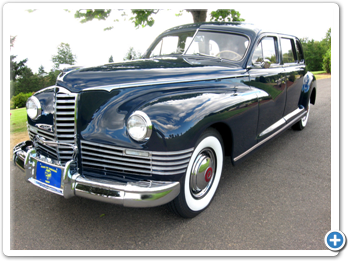
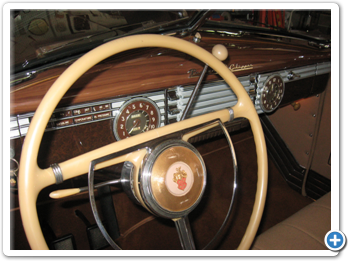
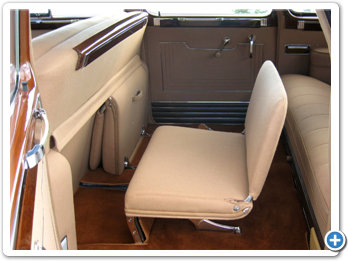
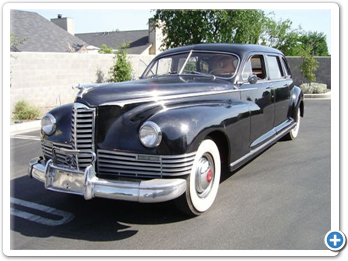
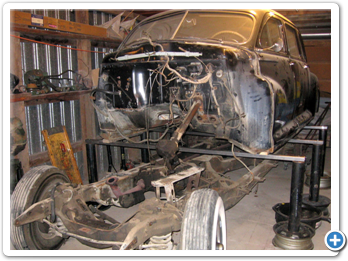
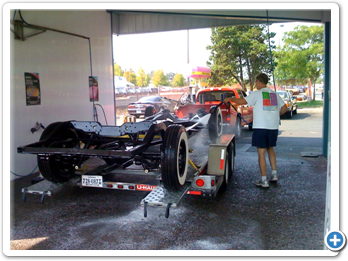

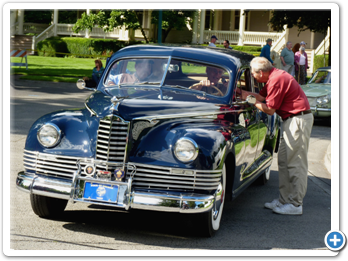
No comments:
Post a Comment